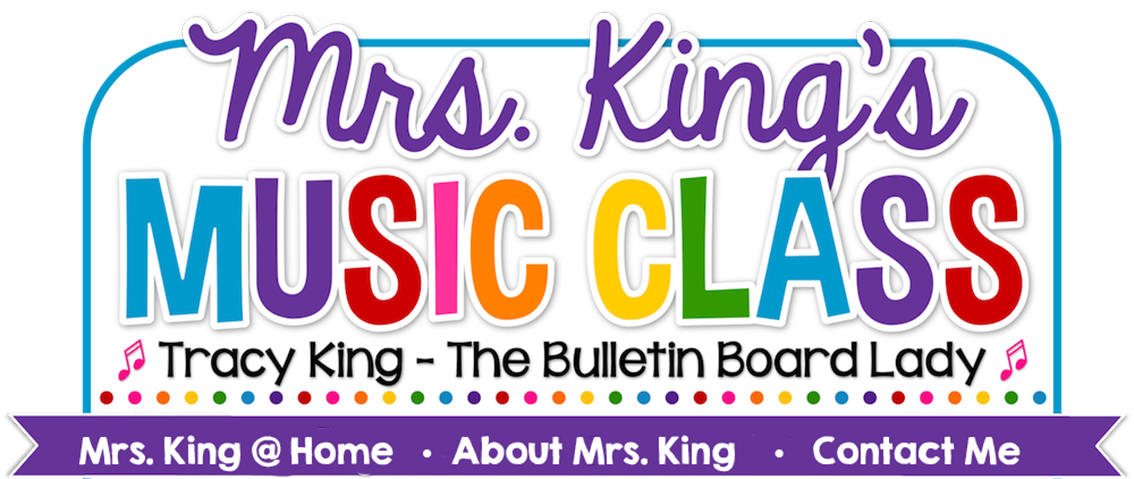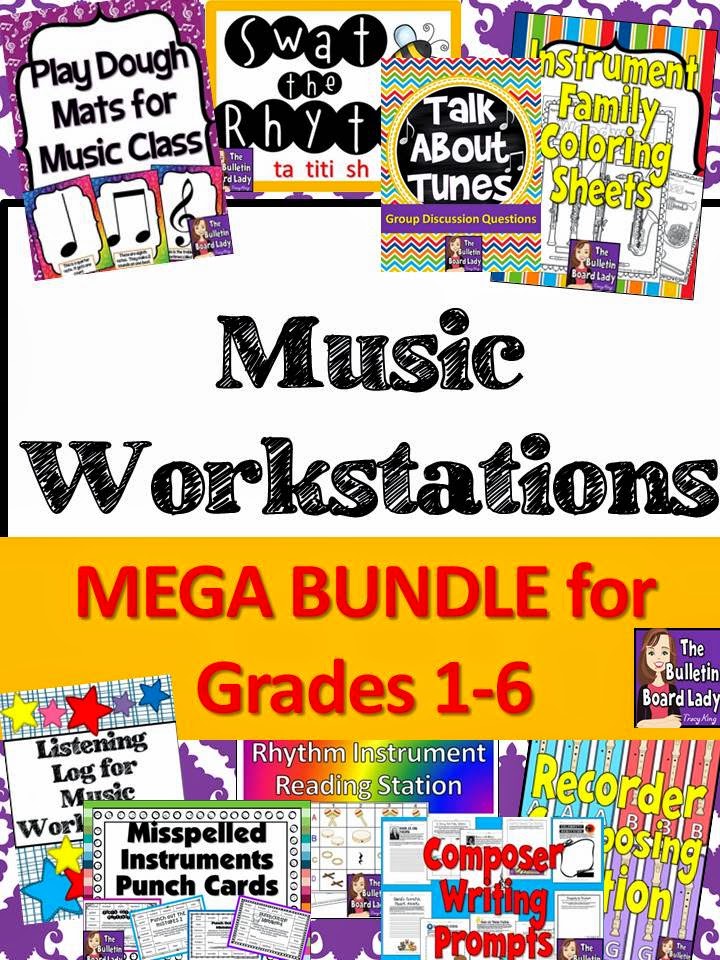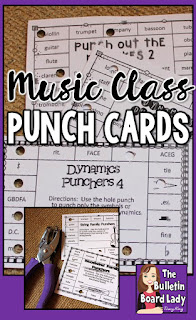Workstations are actually learning stations in your classroom. Workstations used to be called “centers” and I tend to use the terms interchangeably. Teachers that use workstations with their classes have more time to teach small groups of students. Wouldn’t it be nice to sit down for ten minutes with a group for three or four children and listen to the sing, tutor them on recorder or just to connect with them? As music teachers we have such a limited with our students anyway. We need every single minute we can get and workstations are a great way to use those minutes to their fullest potential.
When I plan workstations, I usually plan them around a
concept or theme that I am teaching. In
third grade we do Star Spangled Banner workstations. In second grade we do Carnival of the Animals
centers and 4th-6th grades use centers to practice pitch
names and compose and play in small groups.
Many other teachers use centers to explore elements of music like form,
melody, rhythm, dynamics, etc… You may
have to experiment to see what works best for you.
Sketch out your room and tentatively plan 4-6 places that
you could use. I usually do this on a
scrap of paper, but once upon a time I sketched out my room in PowerPoint using
shapes and now I can use it for all sorts of things. You
could also try Class Architect. This
handy dandy teacher tool lets you rearrange or design your classroom from the
comfort of your recliner.
This is the way my classroom is usually setup. The chairs are set up in such a way that I can be near most students in just three or four steps. I use chairs most classes with 4th, 5th and 6th grades and the lower grades are usually on the carpet. Sometimes the chairs are stacked and out of the way for movement or workstations.
No, I don't actually do 8 workstations at a time with most classes. Usually I do 4-6. I wanted to have a plan for more than that so that I had options. Sometimes I want students to be near the Boomwhackers or rhythm instruments, sitting around my bookshelf or on the carpet with iPads. After sketching it out I found lots of places for stations!
While you are planning consider these things
2. Specify specific areas for each station. Designate specific spaces for each workstation by turning 4 chairs together, using a student desk to organize supplies, laying down a tablecloth or rug or rearranging classroom furniture. When I stack my chairs up and push them out of the way for centers I will throw down a tablecloth to designate the area I expect them to stay in. I use the plastic kind with a flannel backing. They wash easily and stay in place.
3. It is likely that students will need supplies like pencils and clipboards in more than one workstation. How will that work? Will you put the supplies in each station? Will there be a central place for students to get supplies?
4. Not every station needs to be hardcore, higher level thinking, essay writing, sonata composing types of activities. Plan at least one ridiculously fun station! Sometimes it DOES cause an incredible amount of higher level thinking, but the kids will just think it is fun.
5. If you teach multiple grade levels during the day think about how your set-up can be modified to be useful with varying age groups.
6. Don’t forget to plan how you will store all of your supplies. I started with just a few folders and 2 Bop-Its. Now? Well…I love workstations so much that I have had to expand my storage space and find a way to organize that allows me to quickly find and set-up 5-6 centers in about 5 minutes.
· Create centers to focus on a concept you are working on: “Star Spangled Banner”, identifying pitch names, musical opposites, etc… Plan to do these centers for 1 or 2 class periods (45-60 minutes) or 3 to 4 class periods (for 30 minute classes). When working with this kind of set-up take time to go through each center describing the activity and your expectations before dividing into groups.
· Plan centers that focus on a variety of areas like singing, composing, moving, reading music, writing, listening, etc... These centers could be used with multiple grade levels by slightly altering the activities.
· If you plan on keeping the same groups all year, ask students about their preferences before you begin. On a small slip of paper have them write who they would like to work with and who they would not like to work with. It still won’t be perfect, but it may make you aware of some relationships to avoid.
Keeping Time
If you are doing multiple centers in one day, introduce the centers first and then divide students into their first rotation. Once they are in their first center divide the remaining amount of class time by the number of centers you have set up. This is how many minutes they’ll have at each one. Plan a couple of extra minutes after the last one for clean-up.
Project these free timers so the class can see how much time they have left at each station:
Classroom Timers
Cool Timer (my favorite!)
Do you use workstations in your music class? What are some of the ways that you organize for success? Let me know in the comments section or link me up to pictures or posts on the topic. I'm always ready to learn more about workin' the workstations.
In my next blog post we'll talk about all of the fabulous things students can do in workstations. Click here to read it now!
You might like this file in my store! It is a MEGA Bundle of Music Workstations.









